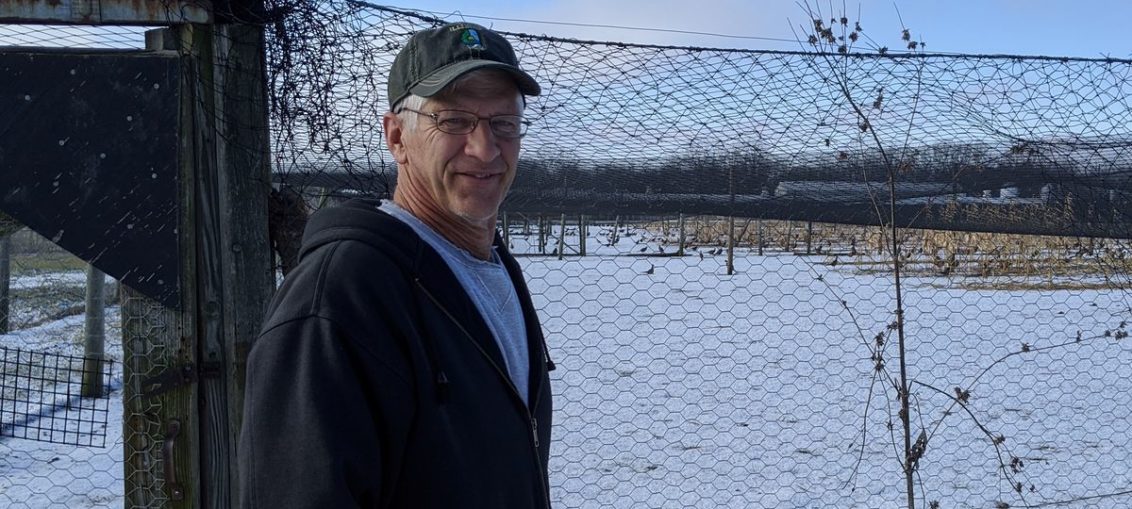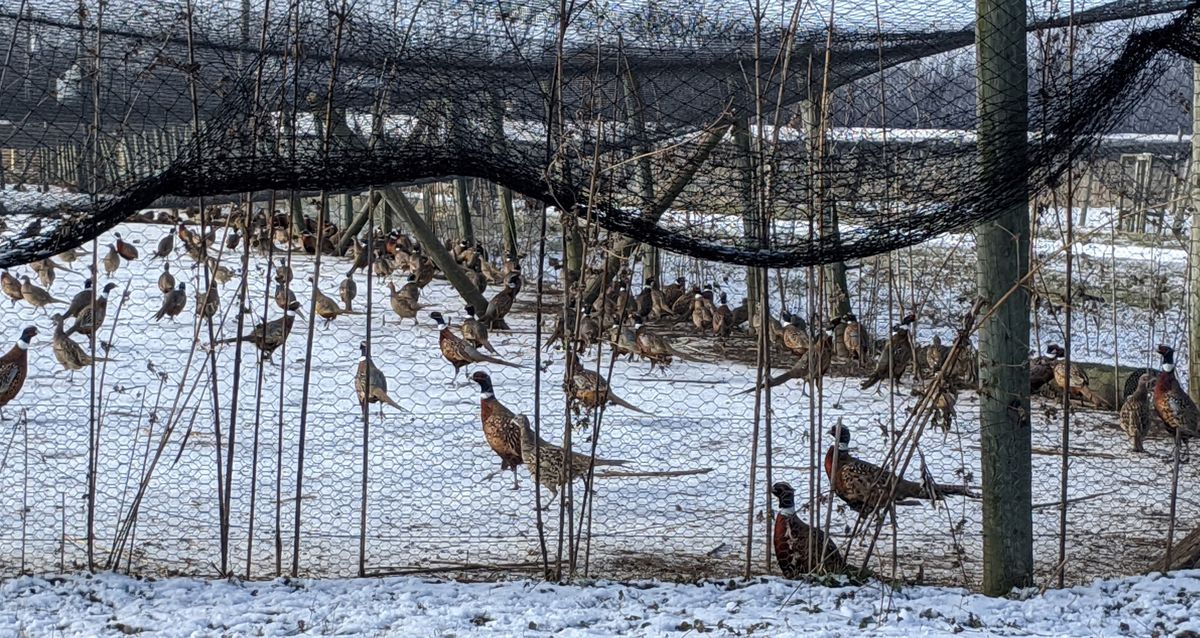
Mike Holem was delivering pheasants once I arrived in mid-December. District forester Jim Tresouthick tracked him down, then gave a tour of the Des Plaines Game Propagation Center close to Wilmington.
After 39 years with the Illinois Department of Natural Resources (Department of Conservation), most as supervisor of the sport farm, Holem retired Tuesday. When his substitute is employed, he might be again to coach the particular person.
Biologist Bob Massey famous Holem won’t have sat for an interview with out it being a shock.
For those that hunt put-and-take pheasants in northeastern Illinois, Holem was the devoted soul rising them. There have been adjustments and surprises by way of the years. Predators have elevated, with extra hawks, common eagle sightings, raccoons and opossums. Tornadoes made a large number of the well-designed recreation farm.
This yr had challenges, too.
‘‘It was so wet, we replanted these pens three times,’’ Holem mentioned.
The pens — wire-mesh-enclosed fields the place the pheasants are completed — are planted 50-50 in corn and milo, which assist birds acclimate to discipline circumstances.
Day-old chicks, a pure 50-50 cut up of cockbirds and hens, come from the state hatchery close to Lincoln, then spend six or seven weeks within the brood home. They are raised on business game-bird meals. When juvenile feathers are coming in, they’re pushed outdoors.
‘‘The rest of their time is outside in the flight-conditioning pens of about one acre,’’ Holem mentioned. ‘‘We do the best we can do to put them in front of the hunter and have them perform.’’
Holem was raised in rural Lake County, close to prolonged household.
‘‘I always enjoyed the outdoors, still do, even on these cold days,’’ he mentioned.
He began as a conservation useful resource tech in August 1981. In 1986, he grew to become a district biologist with the private-land program. When the job as game-farm supervisor got here open in 1990, he took it.
‘‘I had a hard decision,’’ Holem mentioned. ‘‘I had landed my dream job as a district biologist. Maybe it was the move to Wilmington. At the time, we had two young girls, and it allowed us to get into a small-town situation.’’
Plus, his biologist job over 9 counties concerned numerous driving by way of the metro space.
Holem knew the brand new brooding techniques from his time as a tech.
Budget cuts within the 1990s and employees layoffs have been a ‘‘trying time,’’ he mentioned. At the height, there have been 4 full-time employees members and 10 seasonal ones. Now there are two full-timers and 4 seasonals (six within the spring). At the height, they labored with 60,000 chicks; now they work with about 26,000.
‘‘Eighty-five percent of them in front of the hunters in the fall — that is what we strive for,’’ Holem mentioned. ‘‘Pheasants are pretty easy to raise, as long as you do the basic things.’’
Once the pheasants are completed, they’re pushed into runways. A few staff get on their knees, seize birds and crate them. The recreation farm supplies pheasants for Des Plaines State Fish and Wildlife Area, Johnson-Sauk Trail State Recreation Area, Kankakee River State Park, Iroquois County State Wildlife Area and Green River SWA.
 Some of the final pheasants of the yr in a pen at Des Plaines Game Propagation Center in mid-December.Dale Bowman
Some of the final pheasants of the yr in a pen at Des Plaines Game Propagation Center in mid-December.Dale Bowman
‘‘I enjoy them as day-old chicks and enjoy them when they get their adult feathers in the fall,’’ Holem mentioned. ‘‘Fall is a nice time when the weather is nice and they require less work and the birds are coloring up. Then it is time for them to go.’’
In retirement, Holem mentioned he plans to journey along with his spouse and do extra looking and fishing.
Wild issues
More snowy-owl sightings come.
Stray forged
Listening to Hub Arkush and Terry Boers co-host a holiday-week shift was like watching a pair of 30-pound Chinook swim Belmont Harbor in early winter.